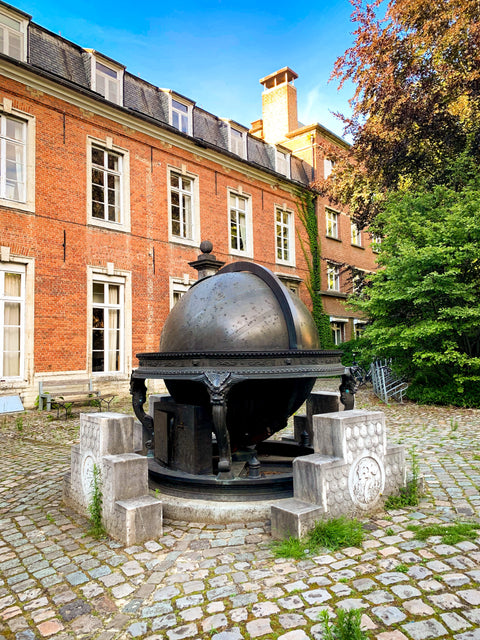A 17th-Century Astronomical Achievement
The Kangxi Celestial Globe was designed in 1675 by Ferdinand Verbiest, a Flemish Jesuit missionary, at the request of the Kangxi Emperor of China. Along with five other astronomical instruments, it was installed at the Ancient Observatory in Beijing, where Verbiest worked.
A Turbulent History
After the Boxer Rebellion in 1901, Verbiest’s instruments were seized by European armies as spoils of war. Fortunately, in 1921, following the Treaty of Versailles, they were returned to Beijing, preserving their cultural and scientific significance.
A Blend of East and West
The Kangxi Globe is considered a milestone in astronomy, blending Chinese and Western traditions of knowledge. Its structure, design, and ornamentation make it a technical masterpiece of the 17th century.
The Replica in Leuven
In 1985, during a visit to Beijing’s Ancient Observatory, the Ferdinand Verbiest Foundation proposed creating an identical replica of the celestial globe for KU Leuven. After years of discussions, an agreement was signed in 1987. The replica was shipped from Tianjin in 1988, arrived in Antwerp, and was finally installed in Leuven in 1989.
Where to See It
Today, the replica stands proudly in the courtyard of Atrechtcollege (Naamsestraat 63, KU Leuven). Beyond its scientific value, the globe has become a symbol of Leuven’s connection to China, attracting many Chinese students to the university.

(Source: KU Leuven, Atrecht College) , Photo by Aslı Tezcan



